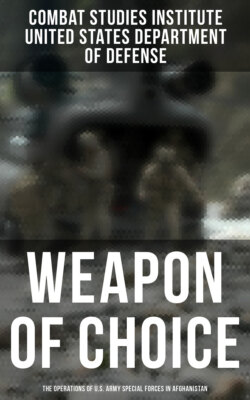Читать книгу Weapon of Choice: The Operations of U.S. Army Special Forces in Afghanistan - Combat Studies Institute - Страница 33
На сайте Литреса книга снята с продажи.
Different Intelligence Concerns for Air Planners
ОглавлениеNight helicopter infiltrations in the high mountains of northern Afghanistan in winter posed major challenges for the JSOAC, both for air rescue (personnel recovery) during the air campaign and for inserting Special Forces for the anticipated UW campaign. Density altitude had reduced helicopter loads, and the first barrier was the 12,000-foot altitude of the best crossing points in the 18,000-foot mountains between K2 and Afghanistan. Helicopter aerial refuels from MC-130P tankers were required for missions from the north. The issues were maximum loads and getting through the 12,000-foot passes. MH-47Es would dump fuel to increase lift as they climbed for the crossing points on the “Bear.” Of concern was the number of refuels per mission as the escorting MH-60L Black Hawk DAPs needed to refuel more often than the MH-47E Chinooks. The enemy antiaircraft threat was another matter.
Getting a complete threat picture from CENTCOM had been LTC Brinks’ biggest problem. Intelligence had been provided in generalities, detailing the different types of “triple A”—antiaircraft artillery, or AAA—but without locations. The biggest fear was surface-to-air missiles (SAMs). CPT Jason Mills (pseudonym), the 2nd Battalion intelligence officer, and SFC Brandon Carr (pseudonym), his intelligence analyst, had collected everything available from the 160th SOAR headquarters before departing Fort Campbell. Mills also got CWO Erick Jefferson (pseudonym), the 160th SOAR intelligence technician, attached to his section. Based on what they had brought, Mills, Jefferson, and Carr prepared an intelligence picture of the battlefield. Current photo imagery, critical to selecting helicopter landing zones (LZs) and selecting routes, was unavailable. Secure data retrieval from the states was delayed when SCAMPI, the “nickname” for a portable secure compartmented information facility, was down, but once operational, Jefferson and Carr collated reams of raw data, analyzed it, and developed a comprehensive enemy order of battle picture.
